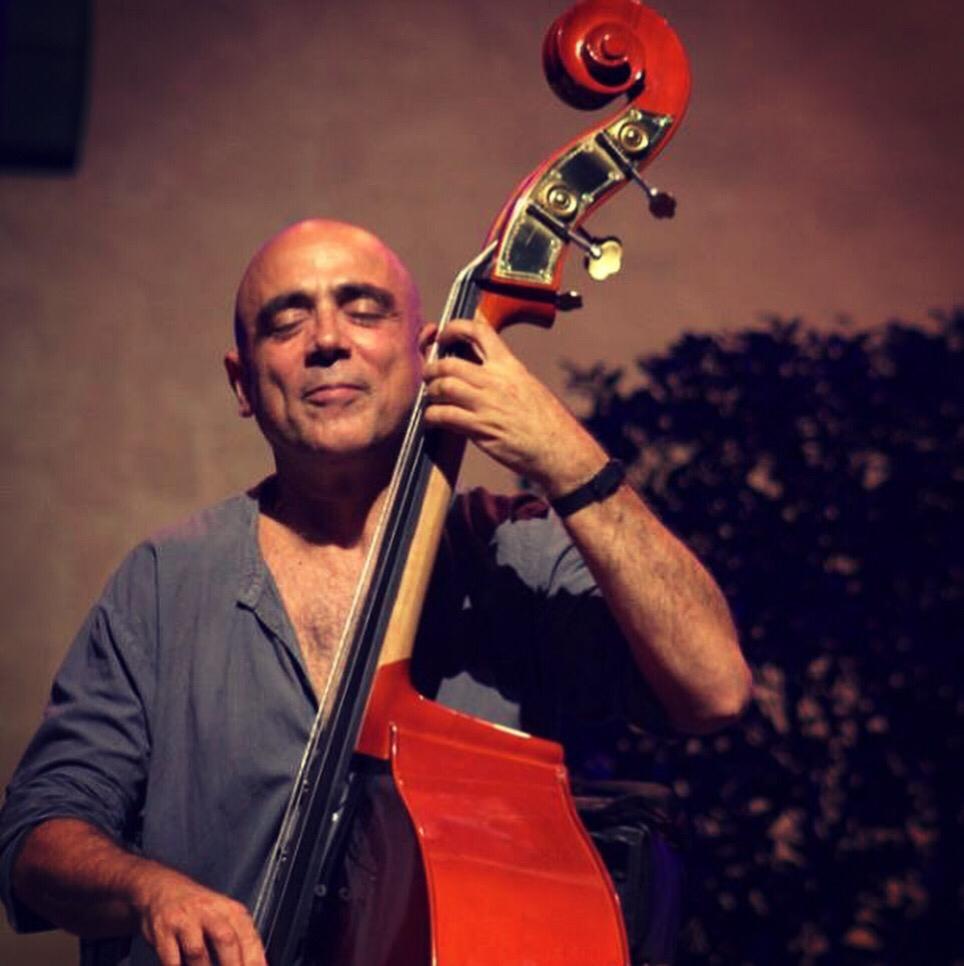 …and the Sant Andreu Jazz Band
…and the Sant Andreu Jazz Band
This happens sometimes in everyday life and all the time in research. It happened to me as I prepared this article seeking to discover who Joan Chamorro really is – Joan Chamorro, the musician, music educator and band leader, creator and leader of the successful youth band Sant Andreu Jazz Band. The coordinator of a network of musicians and lots of other people who in different ways work together with SAJB. The jazz musician who plays bass, baritone, tenor, alto and soprano saxophone, clarinet, bass clarinet, flute, cornet and double bass.
Having presented the band and Joan’s formula for success in several articles, I now wanted to leave the band aside for a while and draw the picture of Joan Chamorro himself. Who is the man behind the band? What in his background made him so successful later on? And who is Joan Chamorro outside the band?
My preparation was to arrange a meeting with Joan and to develop some more detailed questions supposed to help me answer the ones above. We met in June during the Riverboat Jazz Festival in Silkeborg, Denmark. SAJB performed five times (once in a smaller line-up), and of course we attended every performance. After the first concert, which school children from Silkeborg were specially invited to join, my wife and I sat down backstage with Joan. An hour later we parted, and I realized that my story about Joan would be somewhat different to the one I had imagined beforehand.
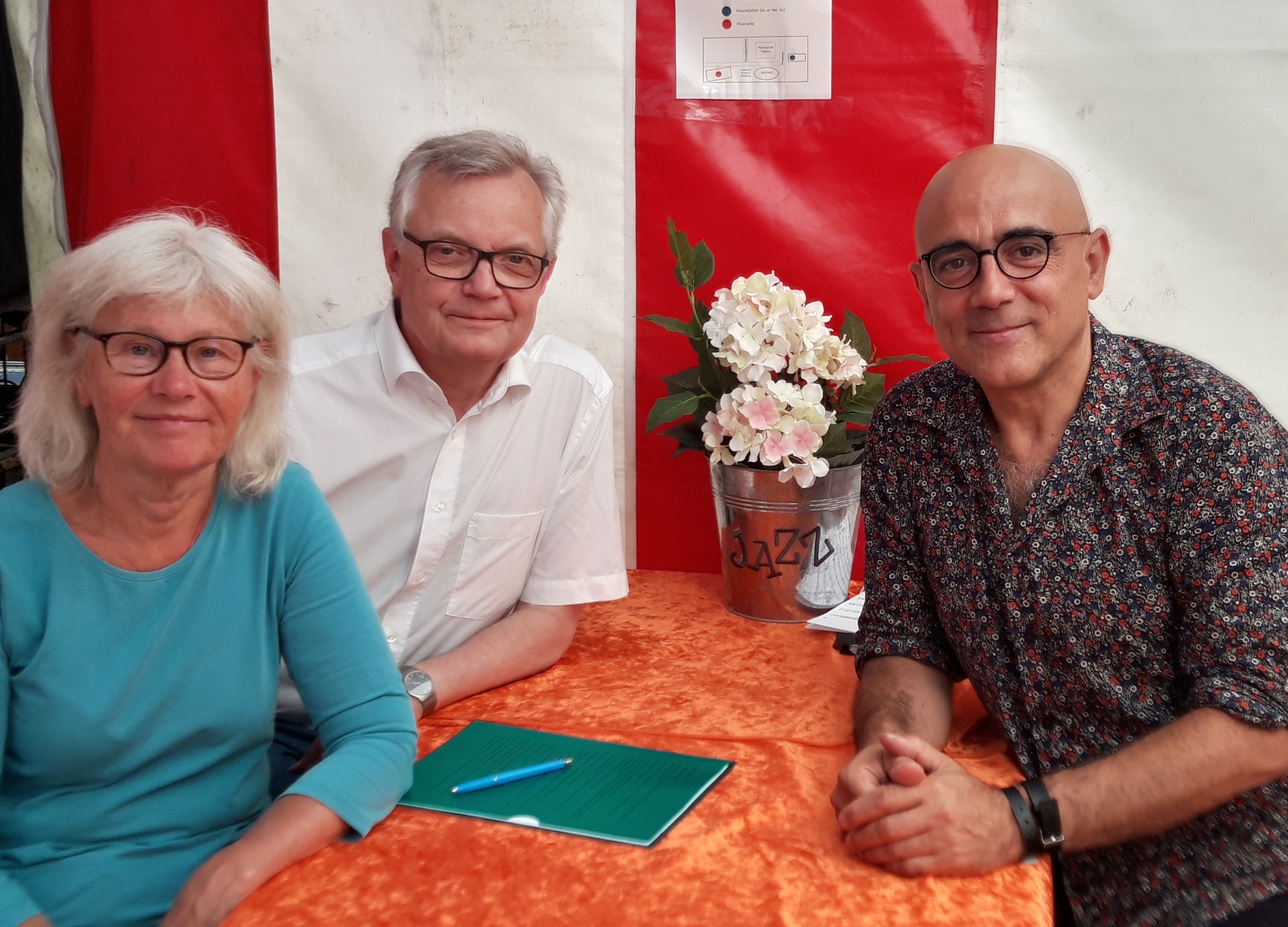
Backstage (Photo by Èlia Bastida)
Like his father Joan liked music, but also sport. However, he did not in those days really pursue either interest. Joan finished school when he was 18 and did not know what to do with his life. By then he had started to play the guitar and some flute, by ear, and to sing a bit. Joan didn’t hear about jazz until he was 18, and then only by coincidence when he happened to buy his first saxophone and casually applied to the Taller de Musics, a jazz school. He was admitted and must have shown talent in his studies, because after a few years as a student he was appointed a teaching professor at the school. Taller de Musics is where Joan began to fall in love with jazz, albeit gradually and not without doubts. For several years he wondered if he was able to dedicate himself to music and if he really had the necessary talent and ability to do so. He worked hard, studying long hours and, little by little, got into the world of jazz. He got his first jobs as a musician, alternating between jazz and more commercial types of music.
Eventually, Joan applied for and was admitted to a degree programme at the Municipal Conservatory of Music of Barcelona. There he studied classical guitar and saxophone for three years before continuing with saxophone for a higher degree. During those years his love for jazz deepened and he came to love the music of Charlie Parker, Ben Webster and especially Dexter Gordon, among many others.
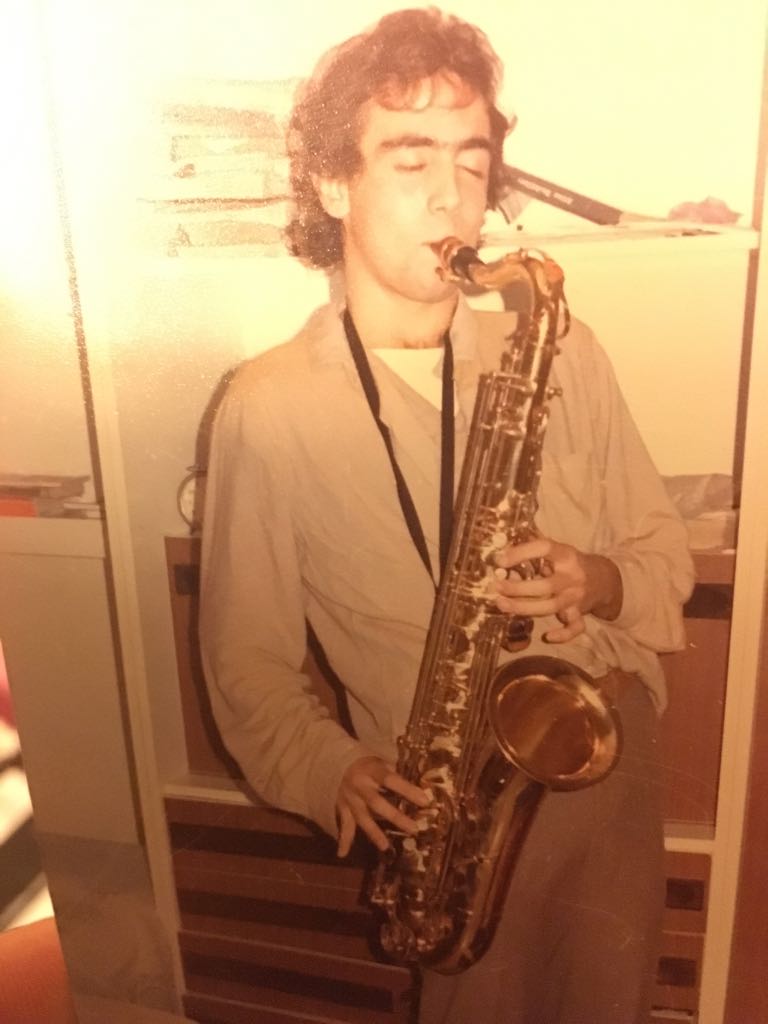
The young Joan Chamorro
Obviously, Joan’s thinking about efficient teaching and learning habits came natural to him. It was his reaction to his experiences as a teacher. Why some persons are like that I do not know, but I imagine Joan’s own learning experiences, sometimes not as rewarding as he would have wished, together with his responsibilities as a teacher, triggered his spirit of pedagogical innovation. He could understand what the kids needed to become devoted and skilled musicians, and this understanding I believe comes from a general understanding of people. Of course, Joan’s interest in jazz also helped to open up new ways of thinking about learning to play music.
And my supposition about how personal factors can explain was also misleading. I had seen Joan Chamorro and SAJB as separate entities, where one created the other. However, my interpretation of what I heard during the interview is that Joan is not an innovator separate from the problems he tries to solve. He is rather someone who always interacts in a very creative way with the situation and people around him. He sees the connections between ideas, facts and people; he sees the opportunities and makes something positive out of them. So the process is really an interaction between Joan and his project. Joan creates the project and the project creates Joan in a spiral of mutual development. Built on his experiences as a teacher he developed his general ideas about music pedagogy early on and then practiced and developed them all along the way.
In addition to his particular mode of innovation, there is a very close connection between Joan’s work life and his private life. You could say that Joan’s work is his life, both in terms of engagement and hours. Sometimes it is said that you should not let your work invade your private life, but I do not think that applies to people like Joan. You could just as well say that his private life invades his work life. But it’s more accurate to say that his work and private lives are two sides of the same coin. (I can understand this situation very well, simply because I recognize myself in it.)
This close connection between Joan and the band also has a social dimension. Joan states in the interview that SAJB is his family. And when I recently interviewed the band’s violinist Èlia Bastida she also said that she sees SAJB as a family, with Joan as one of the family members (link below). In his own home, which he calls the Jazz House, Joan recently built a special room for rehearsals and recordings. Obviously the “family members” of SAJB spend a lot of time there.

Sant Andreu Jazz Band at the Jazz House (Photo by Joan Chamorro)
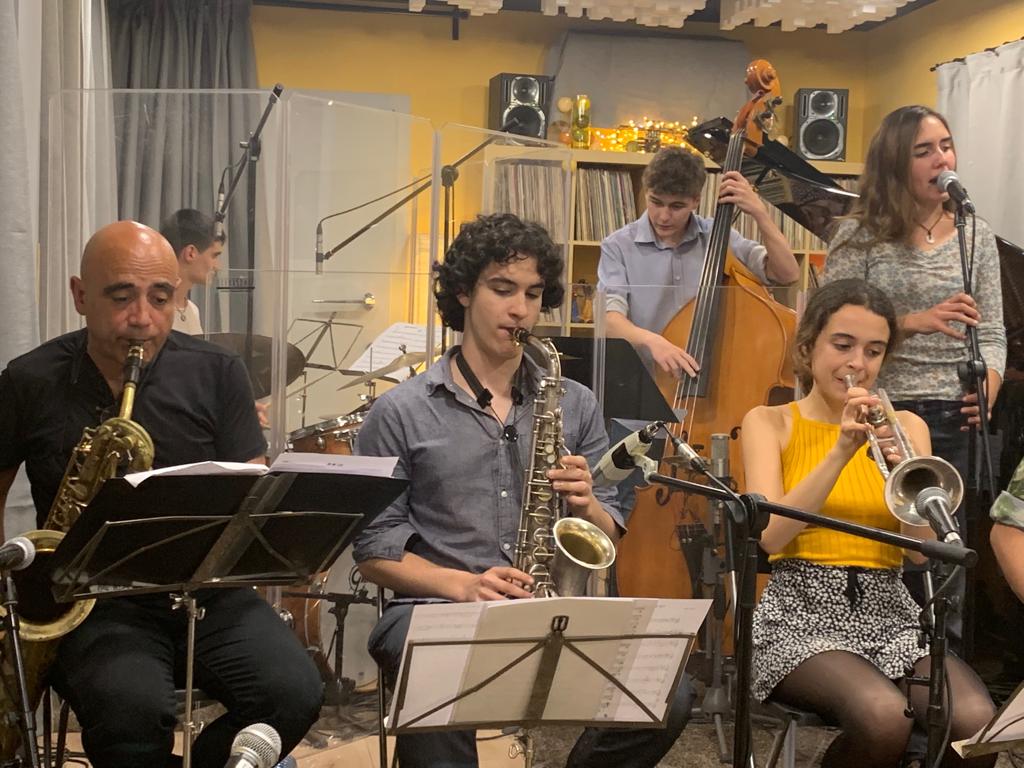
Rehearsal at the Jazz House (Photo by Lili Bonmati)
Some think that it is hard to teach children and young people, that children do not try hard enough and don’t do their homework. Joan does not see it like that. The teacher can be the problem, rather than the children. A teacher’s basic task is to motivate, and with motivation young people can do wonders. You start with what is fun and simple. Singing, dancing and enjoying the music is therefore important in the beginning, reading music is not. That can come later. Adding to that I guess that Joan’s early doubts about his talent later made him realize the importance of promoting young musicians’ self-confidence; a teacher should show his belief in his students.
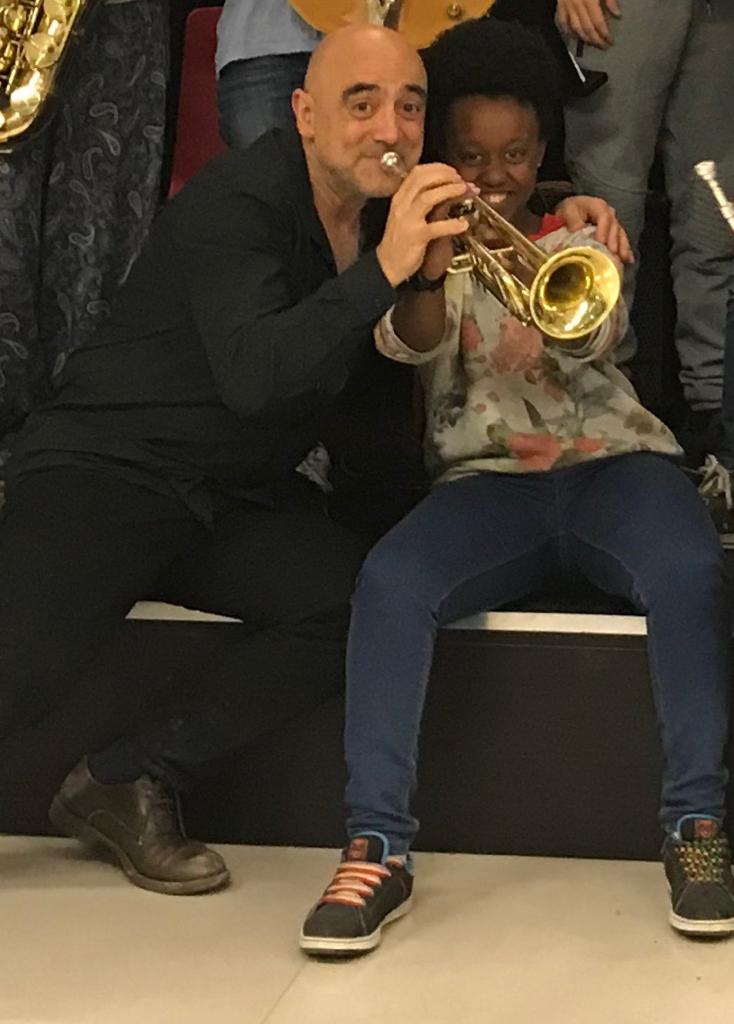
Photo by Lili Bonmati
Being in music education and the music business, Joan is definitely an entrepreneur in both these areas, finding and creating more and more possibilities all the time. SAJB was formed in 2006 and has developed a lot since then, and even since I first discovered SAJB in 2016. The next exciting project coming up is the Jazz Education Stage at the Jazzing Festival – Sant Andreu Jazz Festival in September 2019. Joan is the founder and director of the Jazzing Festival, and also founder and director of the Jazz Education Stage.
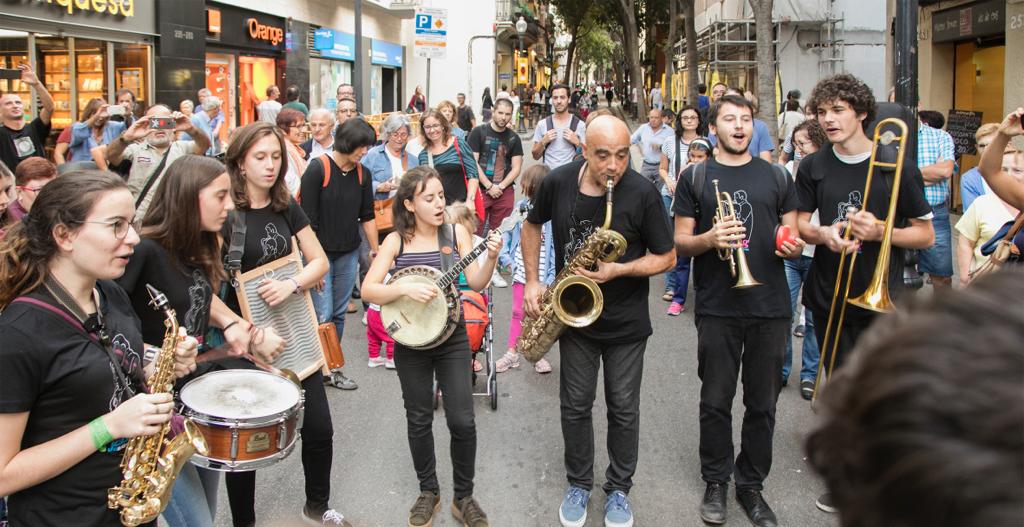
From the Sant Andreu Jazz Festival 2017 (Photo by Lili Bonmati)
Of course, Joan roughly knows the direction he wants to go with the band, but this does not necessitate elaborate strategies. I find this attitude towards planning, strategies and visions very attractive. You do need to know in what broad direction you want to go, otherwise you do not see the opportunities to go in that direction. But if your goals and strategies are too detailed you will probably not recognize interesting opportunities because they do not exactly match your detailed goals, and you will probably not reach these goals at all. Having a sense of direction and an eagerness to develop is what makes Joan find or create opportunities, and then to utilize them in a fruitful way. I believe this is also one explanation why Joan and the band cover many sub-genres in jazz and related music.

Photo by Lili Bonmati
&
”A sad but beautiful story
One day, 20 years ago, I met a person who was an angel. That angel was, is my son, Nicolas, who left when he was three years old, to heaven (he got cancer when he was a year and a half old), and he taught me something as important as the only thing we have is the present, that the future may cease to exist at any time. And he was happy during his short but intense life and he made me appreciate how nice it is to get up in the morning and say thank you to the sun, or the rain. Or the fact of breathing. Or the fact of making others happy simply by being kind and generous.
I believe that this teaching, which is so important to me, has been very important in this process of all these years.
Be generous, dreamer, try to be kind and respectful and above all know that what matters most is the present. That’s what I try to teach, through music.
Few people know this story, the story of my son Nicolas, how important it was and is for me and, I imagine, that it has been, to a greater or lesser extent, for all those people who have crossed my path, especially the members of the sajb.
Joan told me the story because he wanted me to understand this dimension of him and his work. At that time he did not want me to write about it, which I of course respected. But in this context he now agrees that I can relate the story.
Everyone who reads Joan’s words will inevitably, like me, feel deeply touched and will see his work with SAJB in a new light. Together with the effort and joy of Joan and all band members, the bright image of Joan’s son shines through the music of the Sant Andreu Jazz Band.
________
A sample of songs from 2009-2019
Cute / Petite Fleur / Dream A Little Dream Of Me / Bli-Blip / Bei Mir Bist Du Schön / Easy Money / Undecided / Georgia On My Mind / Mood Indigo / Moody’s Mood For Love / Save Your Love For Me / Águas de Março / From This Moment On / Triste / Qasimodo / The Elder / Groove Merchant / Doralice / The Good Life / Chelsea Bridge / Mood Indigo / Li’l Darlin’
More songs in the posts below – and many, many more on YouTube
Related posts
Why do we love the Sant Andreu Jazz Band? (June 26, 2020)
To be sincere (May 30, 2020)
Joan Chamorro New Quartet (February 3, 2020)
Èlia Bastida (May 24, 2019)
Added reflections on The Sant Andreu Jazz Band formula (January 3, 2019)
The Sant Andreu Jazz Band formula (October 26, 2018)
La Màgia de la Veu & Jazz Ensemble (July 8, 2017)
Sant Andreu Jazz Band live (April 30, 2017)
Sant Andreu Jazz Band (September 22, 2016)